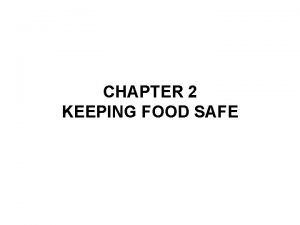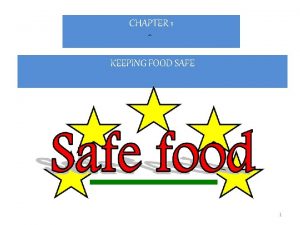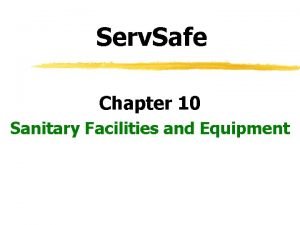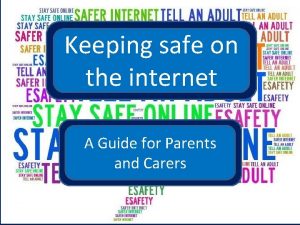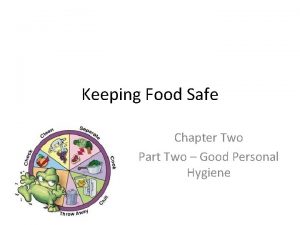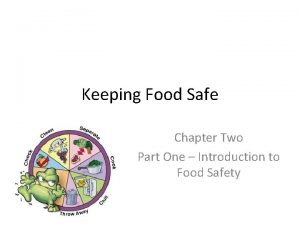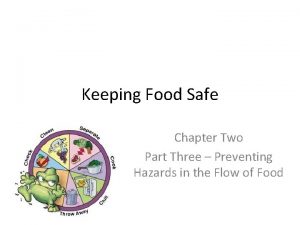Keeping Food Safe Chapter Two Part Four Food






- Slides: 6

Keeping Food Safe Chapter Two Part Four – Food Safety Management Systems

The Flow of Food Review In previous sections we learned how to handle food safely throughout the flow of food. The next step in preventing foodborne illness is the development of a food safety management system. One such system is called “HACCP”.

Food safety management systems • A food safety management system is a group of procedures and practices that work together to prevent foodborne illness. • A Hazard Analysis Critical Control Point, or HACCP, system identifies major hazards at specific points within a food’s flow through the operation. • An effective HACCP system is based on a written plan that considers an operation’s menu, customers, equipment, processes, and operations.

HACCP principles (7) 1. Conduct a hazard analysis. 2. Determine critical control points (CCPs). • 3. 4. 5. 6. 7. Points in the process (could be general, such as “serving” or more specific, such as for a particular recipe the restaurant prepares) where the hazards identified in principle #1 can be prevented, eliminated, or reduced to safe levels. Establish critical limits. Establish monitoring procedures. Identify corrective actions. Verify that the system works. Establish procedures for record keeping and documentation.

The principles in detail • Principle 1: Conduct a Hazard Analysis: – First, look for the potential hazards in the food an operation serves. These hazards might be physical, chemical, or biological. • Principle 2: Determine Critical Control Points (CCPs): – Find the points in the process where the identified hazard(s) can be prevented, eliminated, or reduced to safe levels. These are the critical control points (CCPs). Depending on the menu item, there may be more than one CCP. • Principle 3: Establish Critical Limits: – For each CCP you have identified, determine its critical limit. A critical limit is a requirement, such as a temperature requirement, that must be met to prevent, eliminate, or reduce a hazard.

The principles in detail, cont. • Principle 4: Establish Monitoring Procedures: – Determine the best way for your operation to check to make sure critical limits are being met. Make sure the limits are consistently met. • Principle 5: Identify Corrective Actions: – If a critical limit hasn’t been met, you must take a corrective action—a step to fix the problem. Corrective actions should be determined in advance so everyone knows what to do when critical limits aren’t met. • Principle 6: Verify that the System Works: – Determine if the plan is working as intended. Evaluate it on a regular basis. • Principle 7: Establish Procedures for Record Keeping and Documentation: – Maintain the HACCP plan and keep all documentation created when developing it.
